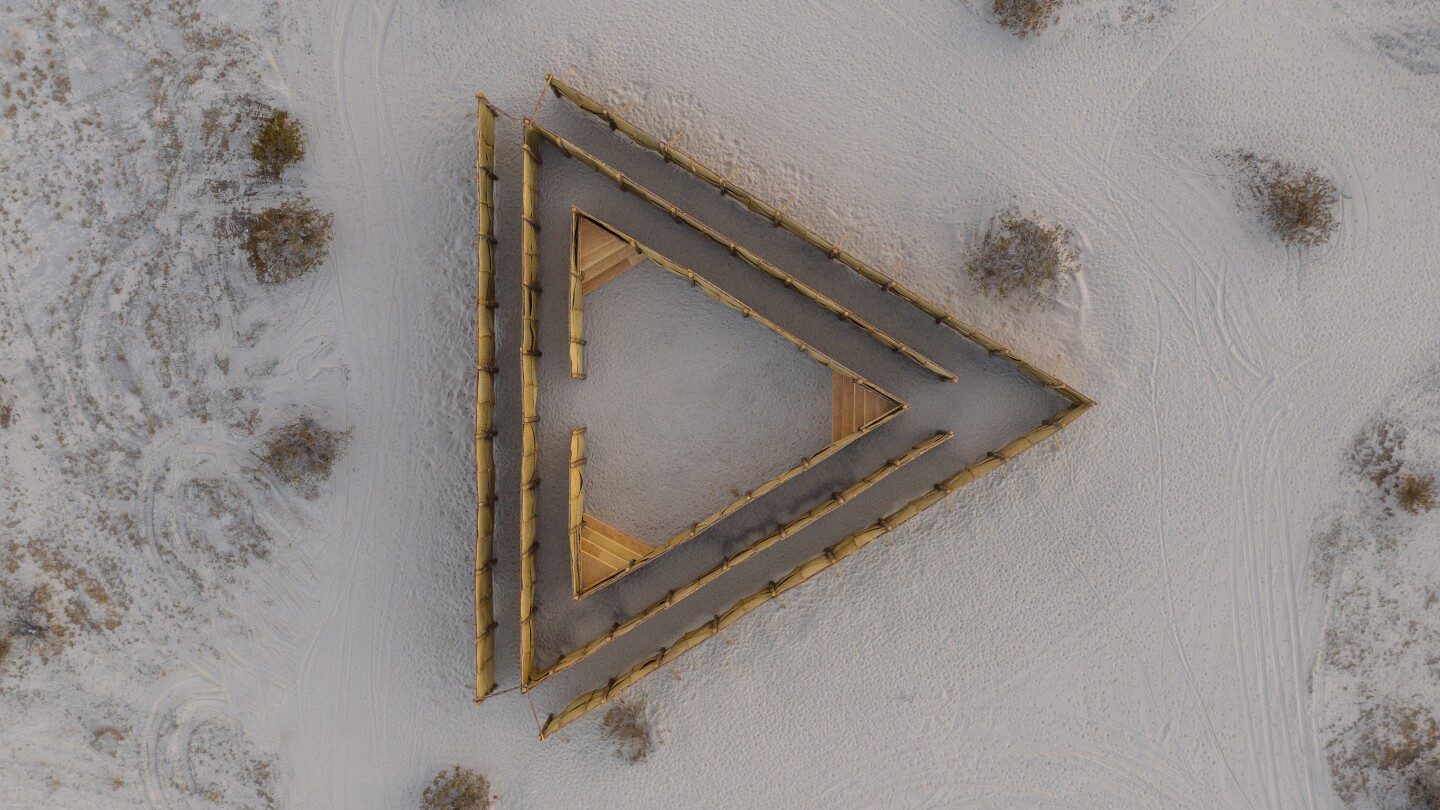
A Maze in the Desert Depicts the Risky, Uncertain Reality for Immigrants
As a South Asian-born immigrant first to the U.K., and more recently to the atypical landscape of the Mojave desert in the United States, Eduardo Sarabia's "The Passenger" had much to say to me about the immigrant story. Putting what that is into words is, like the installation, a labyrinthine experience, not unlike navigating this country's lengthy and uncertain immigration process.
The maze is made from palm fiber rugs known as petates, which were gently blowing and creaking in the light breeze of the afternoon. Some of them had become worn down, probably from the very high winds of the desert during this time of year. Yet they remained — tethered to the large, sturdy wooden poles.
Sarabia's maze, set in the extreme landscape of the desert, speaks to the journey of the modern immigrant to the U.S. as one of fragility and resilience.
I left the U.K. almost eight years ago because it had for a long time stopped feeling like home. Unexpectedly, the high desert of California revealed itself as a place I felt most at home, and we enthusiastically embraced each other.
Yet, the concept of home, of finding a new home as an immigrant to the States is not such a simple feat. The desert may have taken me in, and this may be where I've been living and working, filing taxes, paying bills; but I am still required to walk the maze, to move tenaciously around blind corners and false starts, looking for the central point of fully coming home.
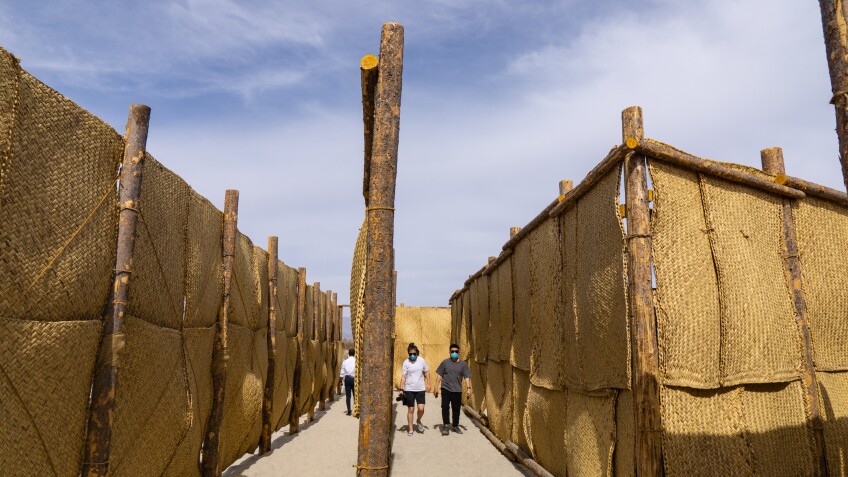



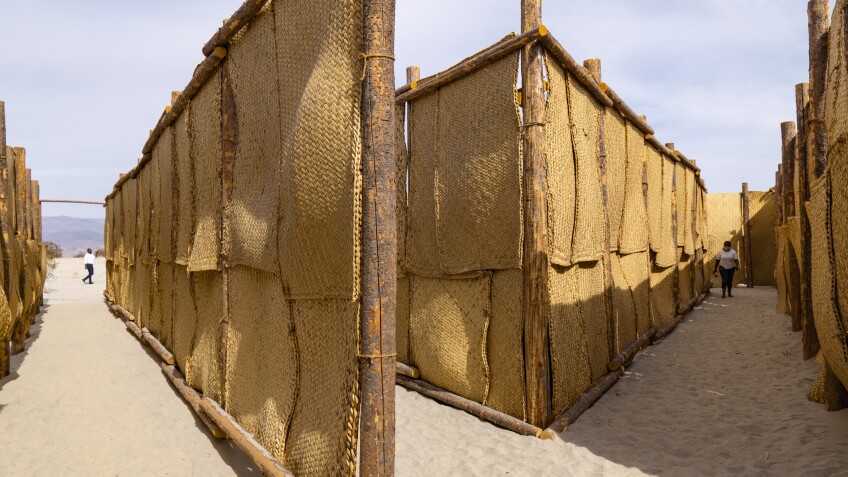

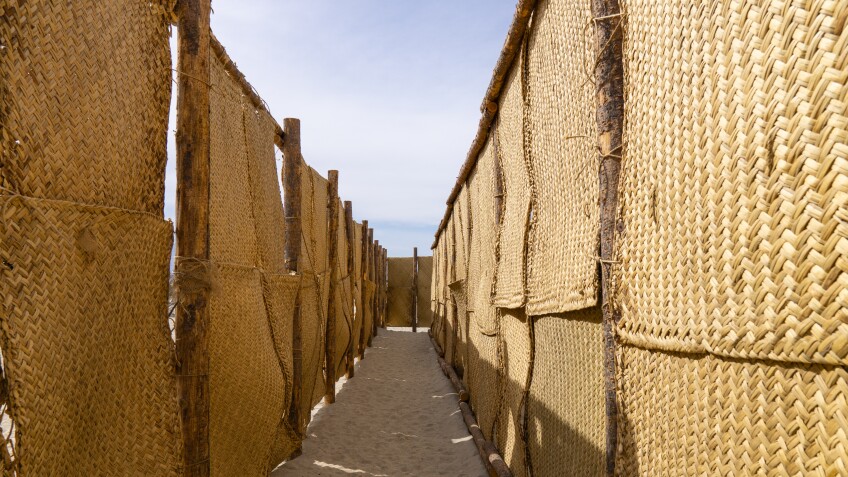


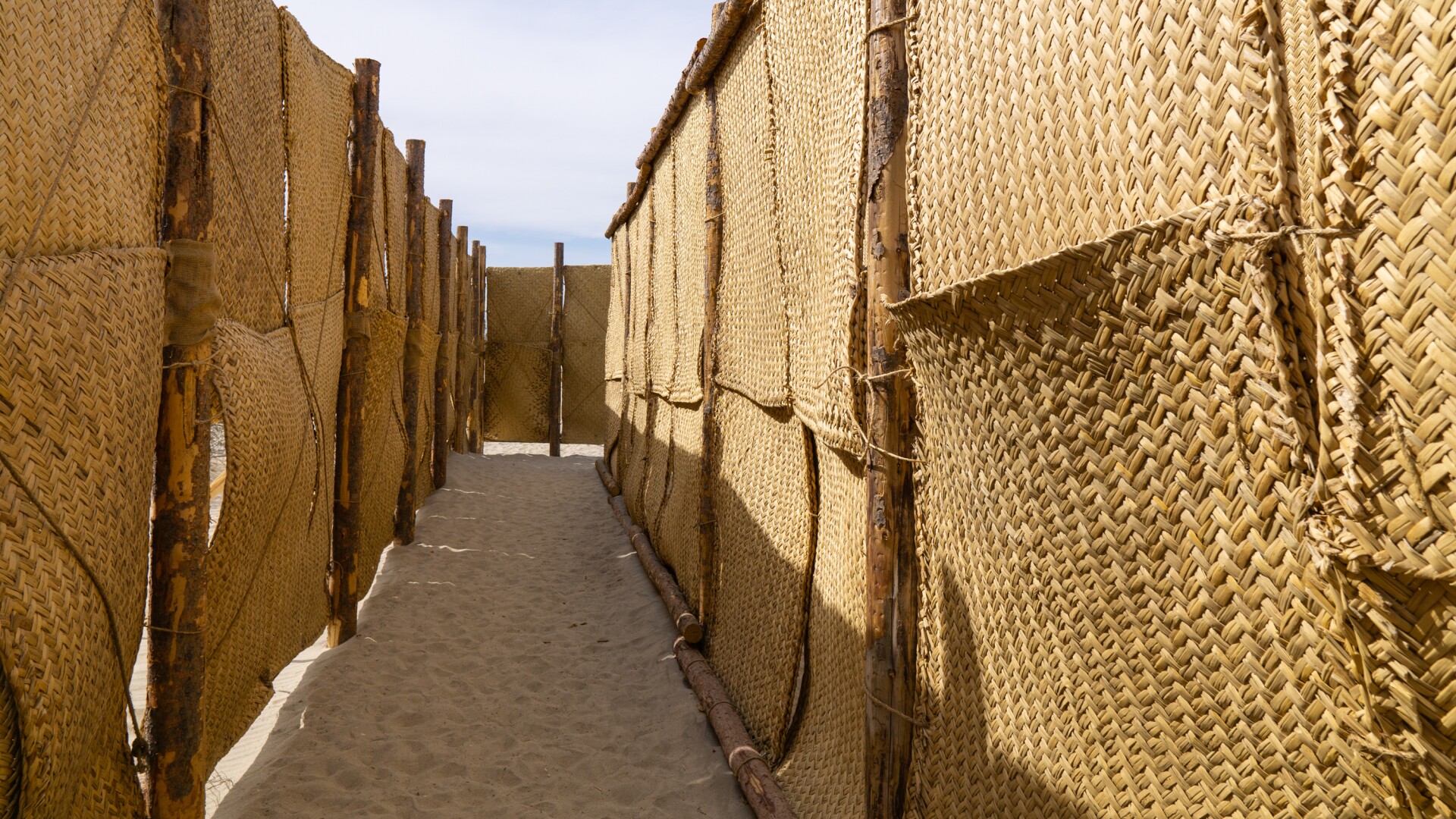
Reaching the triangular center of the maze felt like a victory. There are raised plywood stands on two sides of the space, on which I imagined other immigrants, other passengers who have completed this strange and terrifying journey cheering my arrival home.
I am walking this maze alongside countless others who have left behind old homes; ones that for various reasons didn't fit anymore, in search of a new one, of a new meaningful possibility. But first: we must find our way through while simultaneously holding the potential that at any moment, unforgiving gusts of wind could sweep in and knock down the container of this journey and all our efforts.
"The Passenger" is a moving, experiential homage to the embodiment of faith and uncertainty, risk and victory that is the lived experience of the immigrant — one that it is often challenging to give voice to without losing its necessary nuance.






